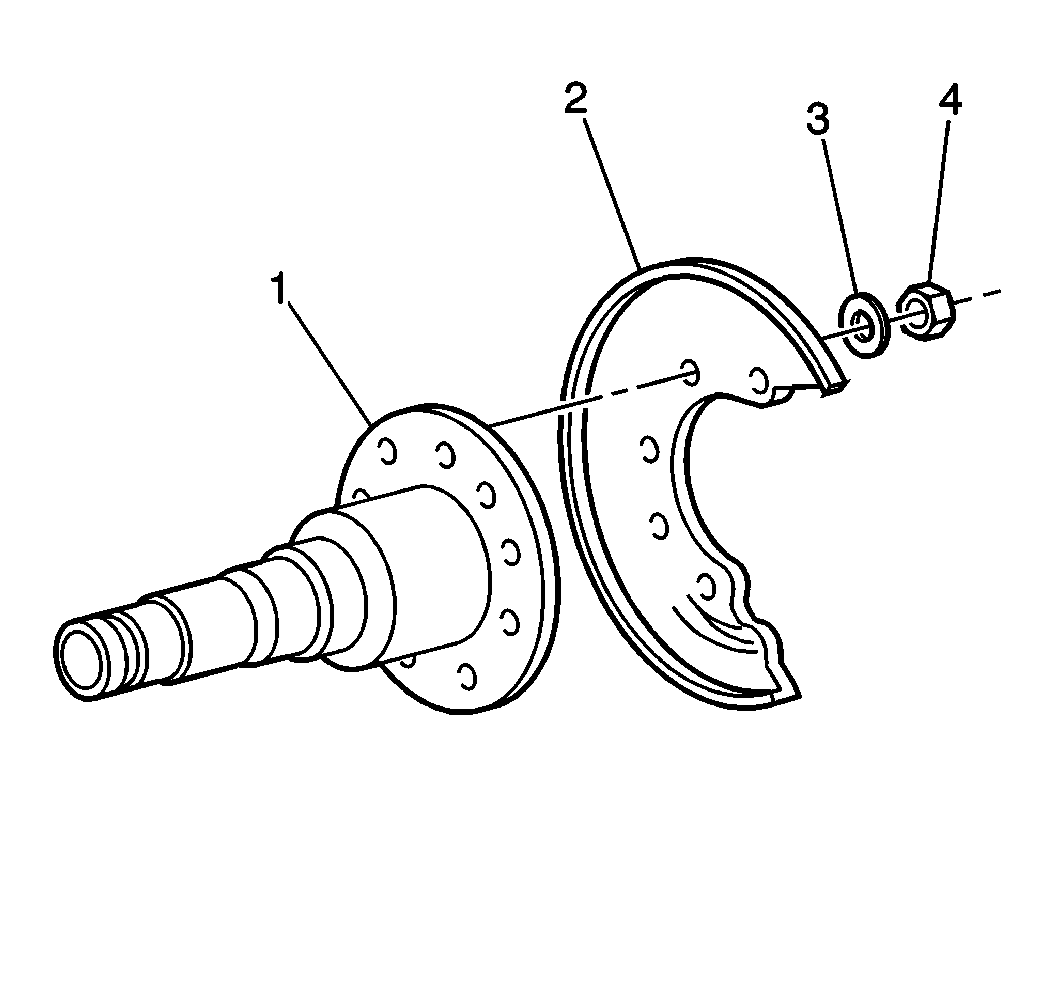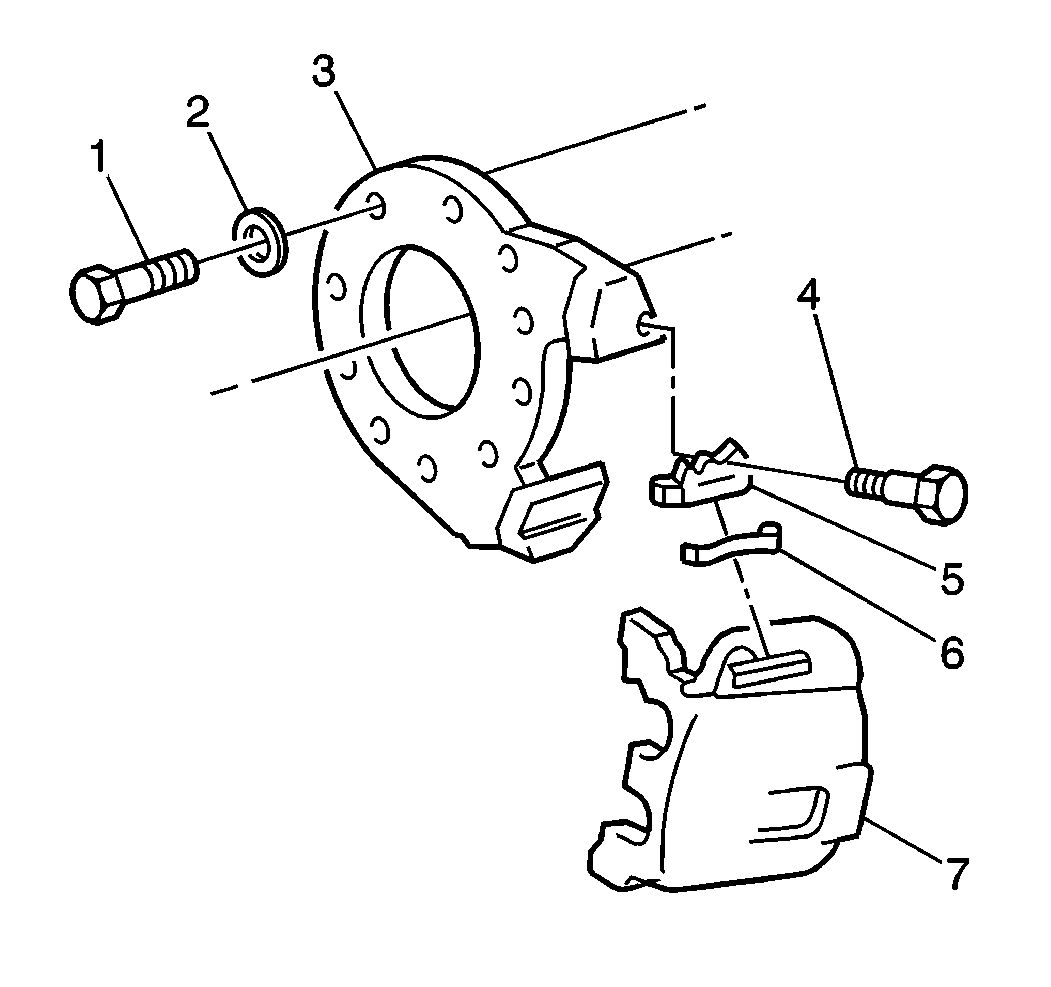The brake caliper mounting plate is used to mount all of
the stationary brake components. An L or an R following the part number cast
on the back of the plates indicates the left or the right side mounting.
Some plates may also have an L or an R painted on the front.
Removal Procedure
- Block the vehicle wheels.
- Remove the brake caliper. Refer to
Brake Caliper Replacement
.
- Remove the hub and brake rotor assembly. Refer to
Front Wheel Hub, Bearing, and Seal Replacement
and
Hub and Rotor Assembly Replacement
.

- Remove the bolts, the
nuts (4), and the washers (3).
- Remove the brake caliper mounting plate.
- Inspect the support rails for the following conditions:
- Clean the rails with a wire brush if necessary.
- Inspect the support rails for cracks or elongated bolt holes.
- Replace the brake caliper mounting plate if necessary.
Installation Procedure

- Return the caliper mounting
plate (3) to the axle flange.
Notice: Use the correct fastener in the correct location. Replacement fasteners
must be the correct part number for that application. Fasteners requiring
replacement or fasteners requiring the use of thread locking compound or sealant
are identified in the service procedure. Do not use paints, lubricants, or
corrosion inhibitors on fasteners or fastener joint surfaces unless specified.
These coatings affect fastener torque and joint clamping force and may damage
the fastener. Use the correct tightening sequence and specifications when
installing fasteners in order to avoid damage to parts and systems.
Important: Threads must be clean and free of grease. Apply 272 Threadlocker GM P/N 12345493,
or equivalent, to the threads of each brake caliper mounting bolt.
- Install the washers, nuts, and bolts.
Tighten
| • | Tighten the shield bolts (if equipped) to 32 N·m
(24 lb ft). |
| • | Tighten the brake caliper mounting plate bolts to 280 N·m
(206 lb ft). |

- Install the hub and brake
rotor assembly.
- Install the brake caliper. Refer to
Brake Caliper Replacement
.
- Lower the vehicle.
- Remove the wheel blocks.



